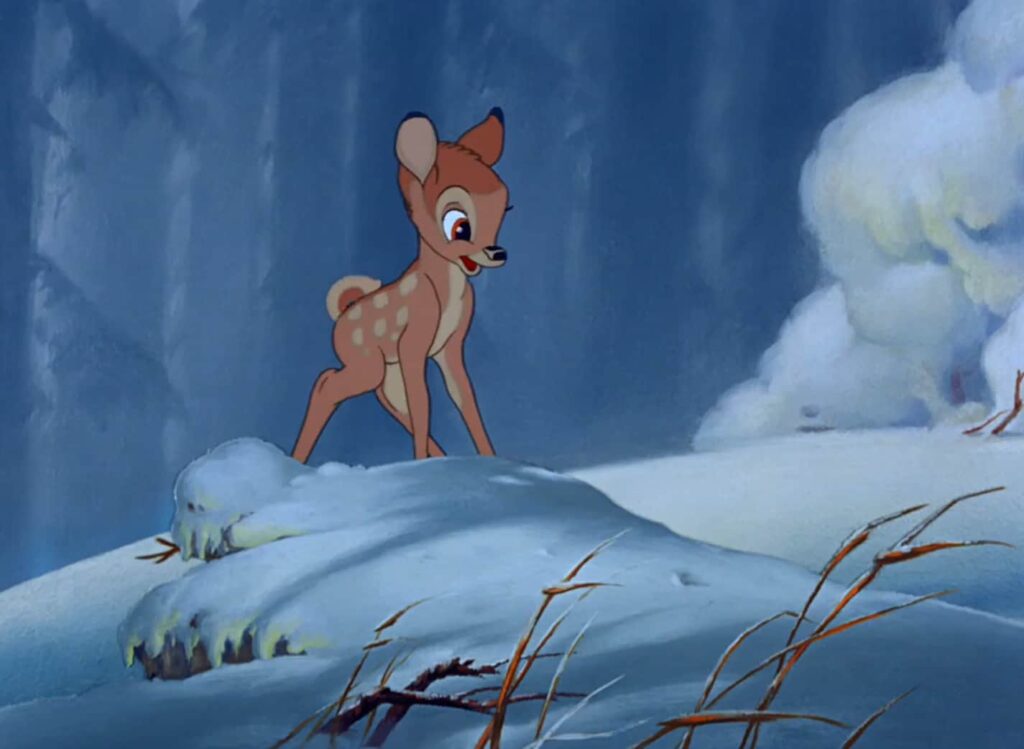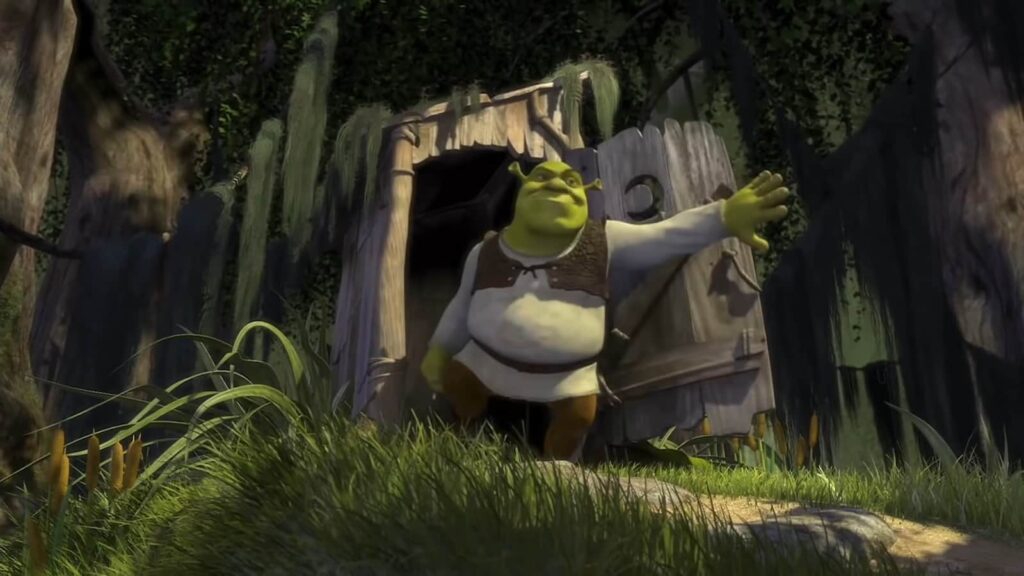“Aren’t you too old to be watching cartoons?” This question arises more often than it should. From societal attitudes to award shows, animation frequently faces criticism for its perceived lack of maturity, struggling to stand on equal footing with Hollywood blockbusters and live-action films. Despite this, the persistent notion prevails that animation was, is, and always will be exclusively for children; a stance as oversimplified as equating vegan food to mere lettuce leaves.
Discovering why adults are drawn to animation, you might also be intrigued by “Stylized vs. Real: Animation’s New Era,” exploring the cutting-edge advancements in realistic animation.
The focus here is to uncover the origins of this stereotype, address the bias, and clarify why animation truly caters to audiences of all ages.
Is Animation Enjoyable for Adults?
The appeal of animation transcends age, with numerous adults finding profound enjoyment in it. Consider the parent who stays up late to finish a series initially started to bond with their child, or the enduring anime enthusiast among one’s circle of friends. Lessons imbibed from animated stories in childhood often carry over into adult life, offering a nostalgic avenue to rekindle youthful spirits and a playful heart.
The concept of a ‘Kidult’ emerges as an apt descriptor, denoting adults whose media preferences align with those traditionally associated with younger demographics. Far from a negative trait, such individuals often possess a captivating zest for life, maintaining a connection with the imaginative wonder of their younger years.
What is the Origin of the Animation Misconception?
The roots of this misinterpretation trace back to one of the trailblazers of the animation industry. Historically, Disney’s animated features were predominantly aimed at a younger audience. Even with scenes potentially sensitive for children, classics like “Snow White and the Seven Dwarves,” “Pinocchio,” and “Bambi” were crafted to be straightforward and child-friendly. To viewers in the 1930s and 1940s, animation was a novel and enchanting art form, yet it was largely associated with children. This notion has been inadvertently inherited through the ages.
Moreover, there’s a perceived whimsicality in animated films. The pronounced characteristics of Pixar’s figures, their comical voices, and eccentric actions are indeed notable. Yet, these elements do not detract from the artistry of animation. Historical context reveals that early animations also embodied a sense of playfulness. They captivated the imagination of adults just as much as children. Consider Émile Cohl’s 1908 “Fantasmagorie,” often regarded as the inaugural animated film.
Originally, the idea of animation as children’s entertainment was nonexistent because early films were shown in theaters after 9 p.m., a time typically reserved for adults, making cinema an adult-centric pastime.
Dispelling the ‘Just for Kids’ Myth in Animation
Cartoons often convey universal lessons. For instance, “The Lion King” weaves a narrative about forgiveness and acceptance of what cannot be changed. Years later, “The Mitchells vs. the Machines” celebrates familial bonds and the value of embracing individual differences for stronger connections.
“The Incredibles” series stands out as a prime example of animation’s cross-generational appeal, offering layers of enjoyment regardless of the viewer’s age.
The common misconception persists: criticism for adult fans of what are deemed children’s cartoons often comes from those unacquainted with the depth and seriousness that can exist in animated narratives. While familiar with mainstream adult animations like “Family Guy” and “The Simpsons,” they may dismiss the rest as simplistic child fare.
Consider Disney’s “Bambi,” often categorized as child-appropriate, yet it navigates profoundly emotional scenes that resonate on a deeper level with mature audiences.

Pete Docter, the director of “Soul,” states, “Any great movie you watch has some element of darkness or loss or some suffering in it. That’s what makes the fun parts fun.”
Animation studios such as Pixar craft films with a dual audience in mind, creating works that captivate children like “Wall-E” and “Monsters, Inc.,” while also offering layered meanings that resonate with adults.
There is a recognition, though, that some animated content delves into darker, more violent themes not suitable for young viewers, leaving the discretion of viewership to the parents.
Expanding the perspective, a 2018 survey by Statista reported that over 60% of Americans aged 18-49 watch Cartoon Network, despite its primary demographic being children aged 6-14. Additionally, the Pew Research Center has identified that 32% of internet users between the ages of 18-29 watch or download animations or cartoons online on any given day.
These findings highlight that those who indulge in animation, regardless of age, are far from isolated in their interests. Despite this, animation still faces challenges in being regarded with the same esteem as live-action entertainment in certain circles.
Contrasting Animation and Live-Action in Film
To appreciate the distinctions between animation and live-action, an understanding of their creation and essence is required. Animation involves the meticulous crafting of numerous images and drawings to produce the illusion of motion across a sequence of frames. It is an art form built entirely from the ground up, often demanding significant time to animate the envisioned scenes and characters.
Don Bluth, the director behind “Anastasia,” once expressed a desire for animation to explore realms untouched by live-action, noting a trend of animation mimicking live-action’s paths.
Live-action captures real-world dynamics, recording motion or stillness as it unfolds. The process might be quicker compared to animation, but it offers less flexibility when it comes to alterations post-filming.
While some may find animation less relatable due to its inherently non-physical nature, its advantages are numerous:
- Animation excels in conveying complex and abstract concepts with clarity and simplicity;
- It transcends the boundaries of reality, offering audiences new and emotive visual experiences;
- Without the need for physical sets, animation can be produced virtually anywhere with the right technology;
- In contrast to live-action which requires physical presence of actors, animation can be brought to life with a small team of voice actors, and sometimes, without any voice work at all;
- Animated content has longevity and adaptability, allowing for updates and revisions that can extend its relevance and use across various media.
Clients often seek a blend of both mediums for their projects, highlighting that the choice between animation and live-action is project-specific and budget-dependent.
The task now is to shift industry recognition and accolades to reflect the evolving landscape where animation is not overshadowed by live-action.
Challenging Animation’s Recognition by the Academy
The journey of animation in seeking acknowledgment on par with Hollywood’s revered classics and live-action masterpieces has been marked by a persistent struggle for validation.
Illustrating this quest is the tale of a groundbreaking moment in film history. The same year Clark Gable and Myrna Loy were celebrated as Hollywood royalty, Walt Disney ventured into uncharted territory by releasing the first full-length animated feature. Despite skepticism and a risk of financial ruin, “Snow White and The Seven Dwarfs” soared to unprecedented success, challenging perceptions and setting a new standard for storytelling through animation.
The industry’s reluctance to embrace animated features as contenders for major awards persisted, underpinned by a belief that films lacking live actors were not worthy of such accolades.
Tomm Moore, the director of “The Secret of Kells,” pointed out the Academy’s narrow vision of animation, often pigeonholed as merely family entertainment.
Despite milestones, such as “Shrek” securing the inaugural Best Animated Feature Oscar in 2002, and Pixar’s subsequent reign with multiple critically acclaimed titles, the stereotype of animation as a genre solely for children endures.
Evidence of this bias surfaced during the 2022 Oscars, with speeches repeatedly associating animation with children and childhood, inadvertently revealing a lingering reluctance to accept animation as a versatile and universal medium.
Six Key Reasons Animation Appeals to All Ages

The pervasive assumption that animation is solely for the youthful audience has deep roots, influenced by historical perspectives and events. However, animation transcends mere visual entertainment, impacting individuals across all age brackets in unique ways. Here are six arguments demonstrating the boundless nature and universal appeal of animation:
1. The Infinite Possibilities of Animation
The foremost reason animation appeals to everyone is its inherent boundlessness.
Consider animation as the ultimate canvas for creativity—where any concept, emotion, or narrative can be vividly brought to life. Envision scenarios as whimsical as a poodle encased in a bubble adrift in the cosmos, or as surreal as luminescent creatures playing musical instruments by historical landmarks. Animation makes the visualization of the most imaginative ideas a reality.
2. A Shared Joy Across Generations
One of the joys for many families is the shared experience of watching animation.
Unlike the obligatory tasks of parenting, enjoying cartoons is akin to a sumptuous feast savored by both adults and children. It’s a time when youngsters absorb not only the enchanting stories and embedded life lessons from these animated tales but also the warmth of shared experiences with their loved ones, creating lasting memories.
3. Animation as a Gateway to Cultural Learning
Animation stands as a powerful medium for introducing and exploring different cultures and perspectives. Films like “Pocahontas” offer glimpses into Native American culture, while “Ratatouille” paints a picture of Parisian life and culinary artistry. “Hercules,” with its roots in Greek mythology, serves as a whimsical, musical journey into ancient legends.
These films highlight animation’s ability to create a universal sense of humor and immerse viewers in diverse worlds. Despite occasional criticisms for historical liberties taken for narrative appeal, these animated stories provide a broad understanding of various cultures and lifestyles, often unfamiliar to the audience.
4. The Role of Animation in Marketing
Animation is an increasingly vital tool in marketing strategies. Various forms of animated content, such as explainer videos, motion graphics, and both 2D & 3D animations, significantly boost marketing effectiveness. Considering that visual processing is dominant in humans, traditional marketing techniques fall short in comparison.
Key advantages of using animation in marketing include:
- Enhanced brand recognition and remembrance;
- Cost-effectiveness in production;
- Building a loyal customer base;
- Evoking nostalgia among viewers;
- Strengthening overall marketing efforts;
- Handling complex topics effectively;
- Simplifying the sharing process of marketing content.
5. Animation as a Medium of Artistic Expression
Animation’s versatility extends across various sectors, including education, gaming, medicine, architecture, and simulations. Yet, its artistic essence remains integral. The process of creating animation blends technical skill with creative artistry, offering a rich canvas for artistic expression. This fusion of art and technology is a unique aspect that often evokes admiration and envy among artists for the diverse range of expression it offers.
6. Animation as a Nostalgic Journey
Animation has a unique power to rekindle the joys and simplicity of childhood. It invites viewers to revisit cherished memories and relive moments of youthful wonder. This invitation isn’t just a call to reminisce but also an opportunity to engage with animation that can momentarily transport one away from life’s complexities. Whether seeking escape from mundane responsibilities or a brief respite from life’s harsher realities, animation offers a sanctuary. While some animated stories might delve into serious themes, they are not the everyday viewing norm. The variety in animation ensures that it can be a light-hearted escape as often as it is a profound experience.
Conclusion
Despite ongoing perceptions of animation being primarily a children’s genre, incapable of rivaling traditional cinematic classics, the reality is far more nuanced. Animation is not just a genre; it’s a medium in its own right, with the unparalleled ability to transcend the limits of imagination and evoke emotions in a way few other mediums can. It’s a form of storytelling and artistic expression that knows no age, transcending boundaries and appealing to the human experience in its entirety.